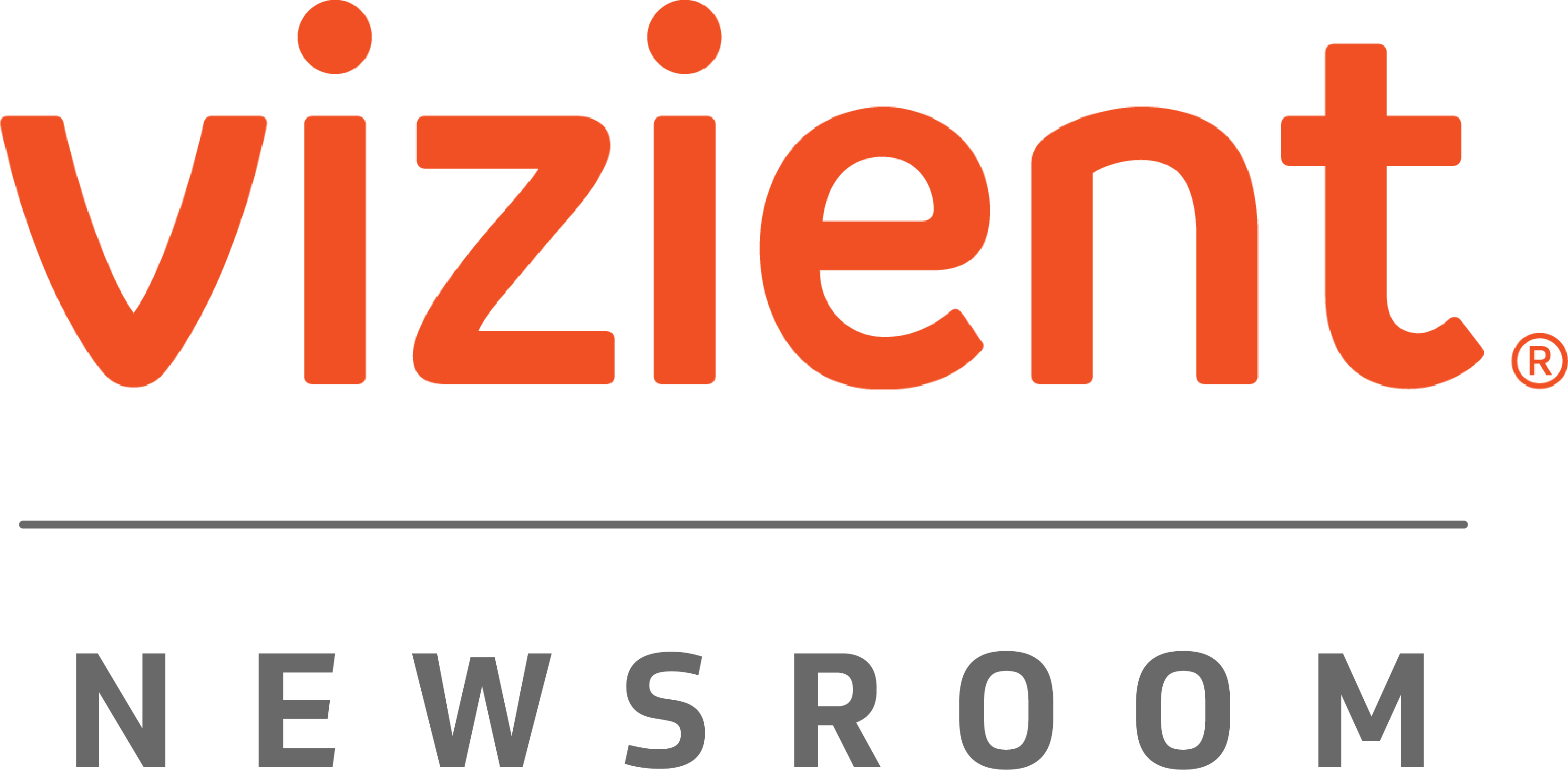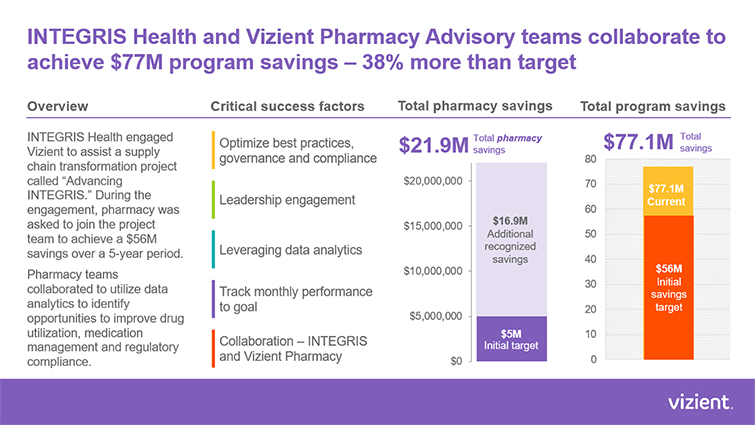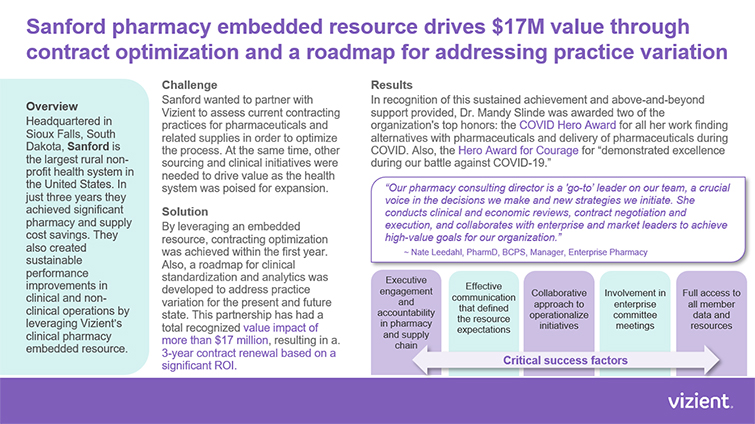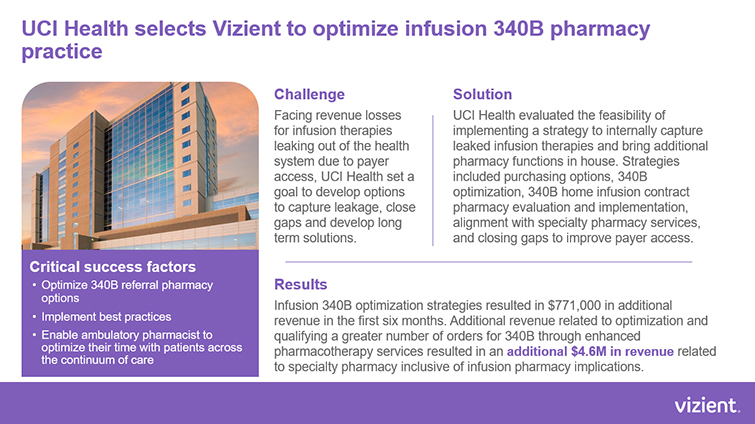By Kayla Green, Vizient
“The goal here is really about creating a customizable approach for providers, helping them enhance their pharmacy performance in ways that fit each organization’s unique goals or needs.” – Bruce Leavitt, Vizient senior director, pharmacy consulting
It all started on the back of a napkin, a small scribble hinting at big possibilities.
Sure, the idea of embedding a pharmacist into a healthcare organization seemed like a lofty idea, but for Greg Weeks, vice president, pharmacy consulting services, it was a chance to dive in and create something new. Something, it turns out, that would lay the groundwork for future dedicated resource positions across all Vizient provider members.
It was a little over five years ago when Weeks met up with a pharmacist who wanted to discuss innovative ways to expand their pharmacy services, and sitting together at a coffee shop, they outlined the plan.
"I remember it like it was yesterday. The two of us sat down for breakfast off-site," said Weeks. "They said that no matter what resource they hired, we had an ability to leverage pharmacy data insights better than they did. So, that's exactly what we did. We developed a way to offer a dedicated pharmacist resource who understood the array of data and how to use those insights to help the provider achieve their cost savings and growth goals for their pharmacy enterprise."
Case Study: INTEGRIS
What started out as only two dedicated resources has since grown to a team of 14 supporting 11 providers.
"We have four types of roles within our dedicated resource program, and the responsibilities for each one are quite different," said Bruce Leavitt, senior director, pharmacy consulting.
The four roles include a pharmacist executive lead advisor, a pharmacy business manager, pharmacy procurement specialist and a pharmacy information technology specialist. Some providers may only have one role, while others may have all four or a combination of roles.
Case Study: Sanford
As an example, one pharmacy executive lead advisor may spend their day providing background on market trends, determining formulary strategy, or diving into contracts at their institution, while a pharmacy business manager may spend their time reviewing purchasing and fill rate analytics, negotiating enhanced vendor agreements, or assist with the 340B program. The pharmacy procurement specialist may run analyses for the pharmacy and therapeutics committee, keep track of overall supply chain processes or manage contract compliance, while the pharmacy information technology specialist works on identifying the best technologies for procurement contracting and execution. But while each of them focuses on pharmaceutical formularies and contract compliance and negotiation, no single dedicated resource, regardless of their role, does the exact same thing – even between providers.
"The goal here is really about creating a customizable approach for providers, helping them enhance their pharmacy performance in ways that fit each organization's unique goals or needs," said Leavitt.
And the team has done just that. In fact, one dedicated resource saved their provider $12 million in one year. Another provider realized $31.7 million in cost savings during the first 27 months of the contract. And a third saved their provider $7.8 million within the first 11 months.
Case Study: UCI Health
"One of the biggest reasons we're able to do this is because our team is truly embedded within the provider organization. They become part of the provider's team, developing relationships and working to meet the institution's goals," said Leavitt.
But while the embedded resources may be dedicated to a provider, they're also able to come together and share ideas immediately across all dedicated resources. The ability to collaborate, share insights on market trends and solve challenges together is what fuels the team's speed to value and sets them apart. It's even led to the creation of financial trackers, improved price parity across the nation and wholesaler monitoring – all benefits that have been born out of provider needs.
"For us," said Leavitt, "it's about listening to the provider and coming up with the best solution for them."
Which, it just so happens, is exactly how it all started: on the back of a napkin in a coffee shop.



